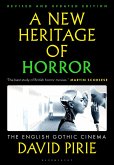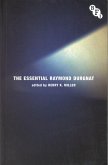The 1989 anime Kiki's Delivery Service, the story of a young witch struggling to find her place in society, is one of the richest of Hiyao Miyazaki's films, and one of the first to enjoy distribution in the West. Daniel Martin's insightful study addresses the film from two key angles: firstly, in terms of its place within the shojo genre in Japanese popular culture: stories about the transformative adventures of teenaged girls, rich in metaphor and meaning. Secondly, Martin discusses Miyazaki's unique approach to the fantasy genre, and the ways his distinct evocation of a grounded but enchanting 'magical realism' in his films relates to theories in fantasy studies. Martin thereby explores the ways in which Miyazaki's filmmaking, and Kiki's Delivery Service in particular, can be understood to have an important place in the canon of popular fantasy that includes the works of J.R.R. Tolkien, C.S. Lewis, and J.K. Rowling.
Hinweis: Dieser Artikel kann nur an eine deutsche Lieferadresse ausgeliefert werden.
Hinweis: Dieser Artikel kann nur an eine deutsche Lieferadresse ausgeliefert werden.








